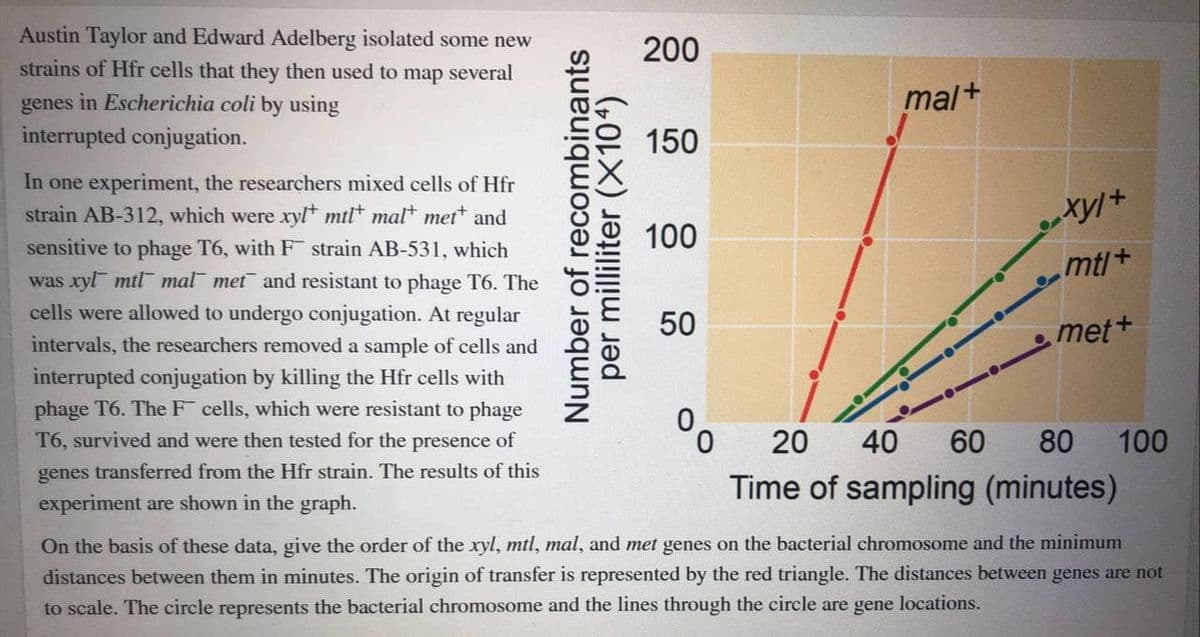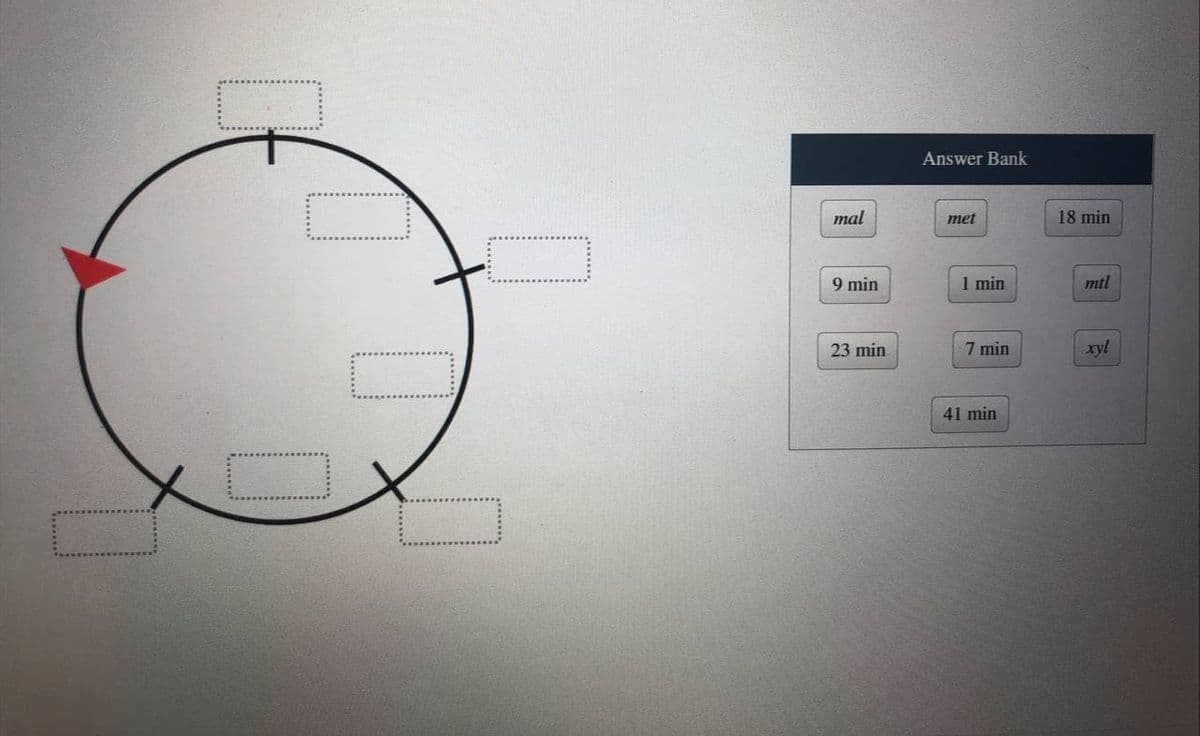150 100 xyl+ mtl+ 50 met+ 20 40 60 80 100
Biology: The Dynamic Science (MindTap Course List)
4th Edition
ISBN:9781305389892
Author:Peter J. Russell, Paul E. Hertz, Beverly McMillan
Publisher:Peter J. Russell, Paul E. Hertz, Beverly McMillan
Chapter17: Bacterial And Viral Genetics
Section: Chapter Questions
Problem 1ITD
Related questions
Question

Transcribed Image Text:Austin Taylor and Edward Adelberg isolated some new
strains of Hfr cells that they then used to map several
200
mal+
genes in Escherichia coli by using
interrupted conjugation.
150
In one experiment, the researchers mixed cells of Hfr
strain AB-312, which were xyl* mtl* mal* met* and
sensitive to phage T6, with F strain AB-531, which
was xyl mtl mal met and resistant to phage T6. The
100
mt/+
cells were allowed to undergo conjugation. At regular
intervals, the researchers removed a sample of cells and
50
met+
interrupted conjugation by killing the Hfr cells with
phage T6. The F cells, which were resistant to phage
T6, survived and were then tested for the presence of
0.
20
40
60
80
100
genes transferred from the Hfr strain. The results of this
experiment are shown in the graph.
Time of sampling (minutes)
On the basis of these data, give the order of the xyl, mtl, mal, and met genes on the bacterial chromosome and the minimum
distances between them in minutes. The origin of transfer is represented by the red triangle. The distances between genes are not
to scale. The circle represents the bacterial chromosome and the lines through the circle are gene locations.
Number of recombinants
per milliliter (X104)

Transcribed Image Text:Answer Bank
mal
met
18 min
9 min
1 min
mtl
23 min
7 min
xyl
41 min
Expert Solution
This question has been solved!
Explore an expertly crafted, step-by-step solution for a thorough understanding of key concepts.
This is a popular solution!
Trending now
This is a popular solution!
Step by step
Solved in 2 steps with 2 images

Follow-up Questions
Read through expert solutions to related follow-up questions below.
Follow-up Question
The answer bank only has one 9 minute option, therefore 9 minutes can only be used once. Is it possible that there is a mistake in the above solution?

Transcribed Image Text:Austin Taylor and Edward Adelberg isolated some new
strains of Hfr cells that they then used to map several
genes in Escherichia coli by using
interrupted conjugation.
In one experiment, the researchers mixed cells of Hfr
+ + + +
strain AB-312, which were xyl mtl mal met and
sensitive to phage T6, with F strain AB-531, which
was xyl mtl mal met and resistant to phage T6.
The cells were allowed to undergo conjugation. At
regular intervals, the researchers removed a sample of
cells and interrupted conjugation by killing the Hfr
cells with phage T6. The F cells, which were resistant
to phage T6, survived and were then tested for the
presence of genes transferred from the Hfr strain. The
results of this experiment are shown in the graph.
Number of recombinants
per milliliter (X104)
200
150
100
50
0
0
20 40 60
Time of sampling (minutes)
9 min
7 min
mal+
On the basis of these data, give the order of the xyl, mtl, mal, and met genes on the bacterial chromosome and the minimum
distances between them in minutes. The origin of transfer is represented by the red triangle. The distances between genes are not
to scale. The circle represents the bacterial chromosome and the lines through the circle are gene locations.
Q
xyl
Answer Bank
met
18 min
xyl+
.mtl+
met+
41 min
1 min.
mal
80 100
23 min
mtl
Solution
Recommended textbooks for you

Biology: The Dynamic Science (MindTap Course List)
Biology
ISBN:
9781305389892
Author:
Peter J. Russell, Paul E. Hertz, Beverly McMillan
Publisher:
Cengage Learning

Biology: The Dynamic Science (MindTap Course List)
Biology
ISBN:
9781305389892
Author:
Peter J. Russell, Paul E. Hertz, Beverly McMillan
Publisher:
Cengage Learning